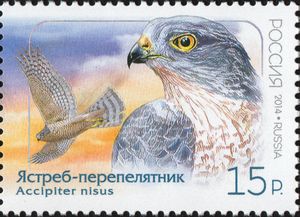Sparrowhawks are most frequently seen in gardens during the autumn and winter months, a time when numbers are swelled with juveniles and when the smaller birds they prey on are flocking into gardens to feed. January 2016 saw the highest average counts of Sparrowhawk (Accipiter nisus) for the time of year but since summer 2016 numbers have been abnormally low, according to Garden BirdWatch. They were only seen in 8% of gardens in December, well below average and a 5% reduction on December 2015. Sparrowhawks are not always popular garden visitors, as they feed on other garden birds. Their population crashed in the 1950s and 1960s due to pesticide poisoning, but numbers have since recovered, and they are the bird of prey most commonly seen in gardens. Claire Boothby, Garden BirdWatch Development Officer at the British Trust for Ornithology said, “The surprise appearance of a Sparrowhawk is always a dramatic garden event and one that has been witnessed by fewer people than usual this winter. Sparrowhawks rely on the availability of prey, in their case particularly birds, to survive. We know that numbers of Great Tits and Blue Tits are down in gardens this year, following a poor breeding season and this may have had an effect on the number of Sparrowhawks seen in gardens.”
Published by surfbirds on February 17, 2017 courtesy of BTO, surfbirds archive
http://www.surfbirds.com/community-blogs/blog/2017/02/17/a-missing-pred…

- Login om te reageren
